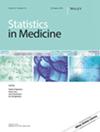基于模型的估计值在证据综合中的可移植性
IF 1.8
4区 医学
Q3 MATHEMATICAL & COMPUTATIONAL BIOLOGY
引用次数: 0
摘要
在证据综述中,效应修饰因子通常被描述为在个体水平上,通过参数化结果模型中的治疗-共变量交互作用而引起治疗效应异质性的变量。因此,效应修饰是针对有条件的衡量标准来定义的,但在卫生技术评估中,人口层面的决策需要边际效应估计值。对于非可比性指标,即使存在个体水平的治疗效果同质性,在个体水平上不是治疗反应决定因素的纯预后变量也可能会改变边际效应。在异质性的情况下,不可直接折叠测量的边际效应不能用边际协变量矩来表示,通常取决于条件效应测量修饰变量和纯预后变量的联合分布。这对推荐的证据综合实践有一定的影响。在没有个体水平治疗效果异质性的情况下,或当边际协变量矩在各研究中保持平衡时,未经调整的锚定间接比较可能存在偏差。为了考虑纯粹预后变量的联合协变量分布的跨研究不平衡,可能需要进行协变量调整。在缺乏目标患者个体数据的情况下,协变量调整方法在消除不可直接折叠的测量偏差方面存在固有的局限性。可直接折叠的测量方法可通过以下方式促进边际效应在不同研究之间的可迁移性:(1) 在存在个体水平治疗效果同质性或边际协变量矩平衡的情况下,减少对基于模型的协变量调整的依赖;以及 (2) 在存在个体水平治疗效果异质性的情况下,便于选择基线协变量进行调整。本文章由计算机程序翻译,如有差异,请以英文原文为准。
Transportability of model‐based estimands in evidence synthesis
In evidence synthesis, effect modifiers are typically described as variables that induce treatment effect heterogeneity at the individual level, through treatment‐covariate interactions in an outcome model parametrized at such level. As such, effect modification is defined with respect to a conditional measure, but marginal effect estimates are required for population‐level decisions in health technology assessment. For noncollapsible measures, purely prognostic variables that are not determinants of treatment response at the individual level may modify marginal effects, even where there is individual‐level treatment effect homogeneity. With heterogeneity, marginal effects for measures that are not directly collapsible cannot be expressed in terms of marginal covariate moments, and generally depend on the joint distribution of conditional effect measure modifiers and purely prognostic variables. There are implications for recommended practices in evidence synthesis. Unadjusted anchored indirect comparisons can be biased in the absence of individual‐level treatment effect heterogeneity, or when marginal covariate moments are balanced across studies. Covariate adjustment may be necessary to account for cross‐study imbalances in joint covariate distributions involving purely prognostic variables. In the absence of individual patient data for the target, covariate adjustment approaches are inherently limited in their ability to remove bias for measures that are not directly collapsible. Directly collapsible measures would facilitate the transportability of marginal effects between studies by: (1) reducing dependence on model‐based covariate adjustment where there is individual‐level treatment effect homogeneity or marginal covariate moments are balanced; and (2) facilitating the selection of baseline covariates for adjustment where there is individual‐level treatment effect heterogeneity.
求助全文
通过发布文献求助,成功后即可免费获取论文全文。
去求助
来源期刊

Statistics in Medicine
医学-公共卫生、环境卫生与职业卫生
CiteScore
3.40
自引率
10.00%
发文量
334
审稿时长
2-4 weeks
期刊介绍:
The journal aims to influence practice in medicine and its associated sciences through the publication of papers on statistical and other quantitative methods. Papers will explain new methods and demonstrate their application, preferably through a substantive, real, motivating example or a comprehensive evaluation based on an illustrative example. Alternatively, papers will report on case-studies where creative use or technical generalizations of established methodology is directed towards a substantive application. Reviews of, and tutorials on, general topics relevant to the application of statistics to medicine will also be published. The main criteria for publication are appropriateness of the statistical methods to a particular medical problem and clarity of exposition. Papers with primarily mathematical content will be excluded. The journal aims to enhance communication between statisticians, clinicians and medical researchers.
 求助内容:
求助内容: 应助结果提醒方式:
应助结果提醒方式:


